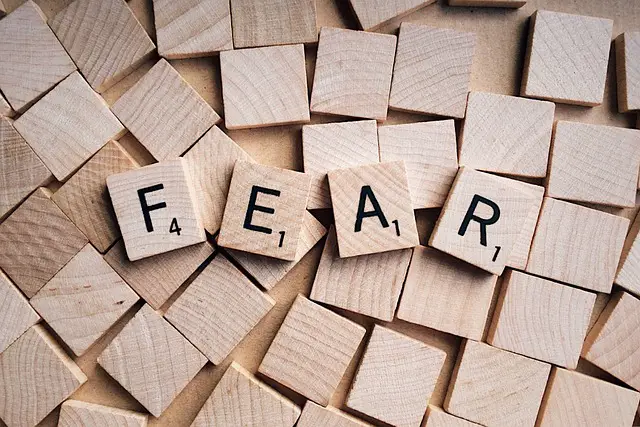Being paranoid involves irrational fear and distrust; being scared is a normal emotional response to a perceived threat. Paranoia is excessive and unfounded.
TL;DR Paranoia Vs. Fear
Paranoia, characterized by irrational thoughts and beliefs, often leads individuals to interpret innocent situations as threatening or malicious. On the other hand, fear is a natural human response to perceived danger or threats.
While both paranoia and fear can induce feelings of unease and apprehension, they differ in their origins. Paranoia arises from an exaggerated sense of distrust and suspicion, whereas fear stems from tangible circumstances or experiences that pose a genuine risk.
What is Paranoia?

Paranoia is an intense and irrational mistrust or suspicion of others, often accompanied by the belief that one is being targeted, persecuted, or conspired against. It may manifest as pervasive fears, hypersensitivity to perceived threats, and a distorted interpretation of reality.
Paranoia can be associated with various mental health conditions, such as paranoid personality disorder or schizophrenia.
Managing paranoia typically involves therapy, medication, and support to address underlying fears and improve coping mechanisms, fostering a more accurate and balanced perception of social interactions.
What is Fear?

Fear is a fundamental human emotion triggered by a perceived threat, danger, or harm. It elicits a physiological response, including increased heart rate, heightened alertness, and a readiness to respond.
Fear serves a protective function, preparing the body to confront or avoid potential dangers. While normal and adaptive, excessive or irrational fear can lead to anxiety disorders.
Understanding and managing fear involve cognitive and behavioral strategies, fostering resilience in facing challenges, and seeking support when fear becomes overwhelming or disruptive to daily life.
Paranoia Vs. Fear – Key Differences
| Criteria | Paranoia | Fear |
|---|---|---|
| Nature | Irrational mistrust and suspicion of others | Normal emotional response to perceived threat |
| Intensity | Excessive, unfounded, and often irrational | Can be proportionate to the perceived threat |
| Triggers | Belief in being targeted, persecuted, or conspired against | Perceived danger or threat to physical or emotional well-being |
| Response | Pervasive fears, hypersensitivity to threats, distorted interpretation of reality | Physiological response, heightened alertness, readiness to respond |
| Associations | Associated with mental health conditions like paranoid personality disorder or schizophrenia | Part of the human experience, adaptive for survival |
| Functionality | Can be disruptive, impairing social and interpersonal functioning | Often serves a protective function, alerting to potential dangers |
| Treatment Approach | Involves therapy, medication, and support to address underlying fears and improve coping mechanisms | Cognitive-behavioral strategies, exposure therapy, and seeking support for excessive or irrational fears |
| Adaptive/Disruptive | Disruptive to social interactions and daily functioning | Can be adaptive for survival, but excessive fear may lead to anxiety disorders |
| Reality Perception | Distorted perception of reality based on unfounded suspicions | Perception aligned with the perceived threat, based on real or imagined dangers |
How to Tell if You Are Paranoid or Scared
Distinguishing between paranoia and fear involves examining the nature, intensity, and rationality of your emotions. Here are some considerations:
Paranoia:
- Irrationality: Examine if your mistrust or suspicion is disproportionate or unfounded.
- Pervasiveness: Paranoia often involves pervasive fears extending beyond specific situations.
- Belief in Conspiracy: If you consistently believe in conspiracies or that others are plotting against you.
Fear:
- Proportionality: Assess if your emotional response matches the perceived threat.
- Contextual: Fear is often context-specific, related to a particular situation or stimulus.
- Adaptive Response: Fear can be an adaptive response to real or perceived danger.
If uncertainty persists or impacts daily life, seeking input from a mental health professional can provide clarity and guidance.
Image Credits
Featured Image By – PublicDomainPictures from Pixabay
Image 1 By – Photo by Evelyn Chong
Image 2 By – WOKANDAPIX from Pixabay








